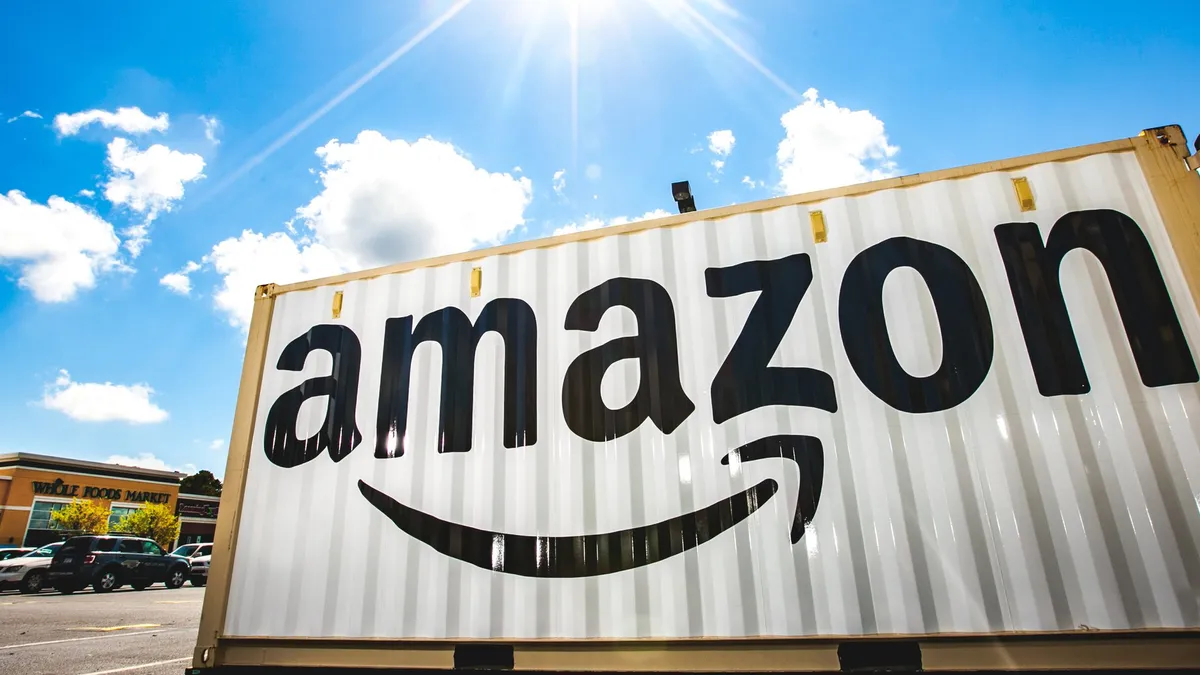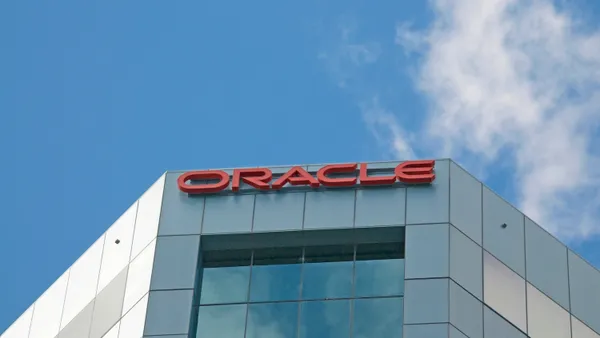Amazon Web Services has had a flurry of acquisition activity in the last month, quietly acquiring cloud optimization startup TSO Logic in December and adding disaster recovery specialist CloudEndure in early January.
Two acquisitions doesn't seem overwhelming for a company that dominates the public cloud market, but AWS has a history of few acquisitions. Prior to TSO Logic, it only acquired one other cloud-related company in 2018, security startup Sqrrl in January.
With few acquisitions, the company tends to rely on organic growth of new functionalities.
On Thursday, the company rolled out AWS Backup, a centralized and fully managed service that helps customers back up data across AWS services and on-premise environments — a play with implications for customers working across hybrid, on-premise and public cloud environments.
The moves show Amazon pushing for a frictionless cloud experience for customers, from planning the move to cloud, smoothing the migration and protecting data once it's on AWS servers. For the AWS customer, it's a better experience; but for competitors and small vendors, it could spell trouble.
Amazon's hard lead in the cloud wars
AWS has, for the last five years, made far fewer acquisitions than its two biggest competitors, Microsoft Azure and Google Cloud Platform. Since 2013, Azure and Google have made more than 20 cloud-related acquisitions apiece. In the same time period, AWS made 12; in 2018, it made just two.
While two acquisitions so close together is unusual for Amazon, it does not appear to be an indicator that the company is ramping up acquisition efforts.
Azure, Google and other competitors are still trying to carve out market share and catch up to Amazon, which holds a comfortable 34% share of the global public cloud market. Acquisitions can play a key role in accelerating capability growth across their offerings.
"Amazon has a history of consuming [its] children in the partner community," either seizing upon something cool and acquiring it or building the capability itself, cannibalizing its own community, said Grant Kirkwood, founder and CTO of Unitas Global, in an interview with CIO Dive.
"Amazon has a history of consuming [its] children in the partner community," either seizing upon something cool and acquiring it or building the capability itself.

Grant Kirkwoord
Founder and CTO of Unitas Global
In general, Amazon tends to build organically, making few acquisitions in the software and cloud space.
Inorganic growth can sometimes be faster though, and talent acquisitions come into play. AWS has been less aggressive than many of its competitors in using acquisition opportunities to bring in talent familiarized with certain tools or capabilities, said Lauren Nelson, principal analyst at Forrester, in an interview with CIO Dive. These acquisitions could include incentives in that arena, according to Nelson.
CloudEndure and TSO Logic operate in markets largely dominated by third parties, so Amazon's moves may be making some smaller players sweat. When Amazon picks favorites or decides to build something internally, other vendors in that market can face a hit to their business, Nelson said.
Beyond consolidation in third-party software providers, there are also implications for consolidation among second-tier players sitting in competitive markets that require deep pockets to stay ahead, according to Sash Sunkara, CEO and founder of RackWare, in a statement provided to CIO Dive.
"I don't know if smaller players will survive or if they'll occupy more of a niche, where they're servicing very small markets. What will happen to Rackspace, for instance? Will CenturyLink continue to invest? What will become of Data Domain or NTT or Fujitsu?"

Sash Sunkara
Founder and CEO of RackWare
Gartner's 2018 Magic Quadrant for for cloud infrastructure as a service dropped eight vendors, including Virtustream, Rackspace, CenturyLink, Fujitsu, Skytap and Interoute. As the leaders got bigger and the market matured, Gartner expanded it's boundaries to favor broader market players.
Customers are prioritizing vendors that offer a broader range of capabilities across use cases over these niche players.
Sunkara doesn't see a rosy forecast for many of the smaller players, some of which may realize they have to move to other businesses in order to compete.
Moving to centralized backup capabilities
While all cloud providers have backup capabilities, Amazon is taking it a step farther.
In the past, each AWS service had a distinct backup functionality — adding complexity to multiservice cloud applications, according to Kirkwood. AWS Backup offers time savings, consistency and compliance benefits by consolidating those previously disparate methods, especially beneficial for the developer community.
Amazon made AWS Backup accessible through the AWS Storage Gateway, a hybrid storage service that allows customers to use AWS cloud storage for on-premise applications.
By making the backup service available on Storage Gateway at launch, it makes a more frictionless path for customers moving from data centers to the cloud. Together with native VMware and Amazon Outposts support, Amazon is converging on a sophisticated, comprehensive hybrid, on-premise and public cloud solution, Kirkwood said.
There are a lot of companies in the backup space, and bringing the capabilities in-house is a strategic move for Amazon.
Together with native VMware and Amazon Outposts support, Amazon is converging on a sophisticated, comprehensive hybrid, on-premise and public cloud solution.

Grant Kirkwood
Founder and CTO of Unitas Global
If a customer is using a third-party service in AWS to backup, they have to pay for resources being used and the software license model from that third party, Kirkwood said. With AWS Backup, they only have to pay for the resources being used.
Third-party backup providers will have to make the case for the extra costs tied to their product.
But many of these vendors may still find opportunity: Backup-focused companies generally have more robust capabilities than one backup service — it is, after all, their entire focus. Whereas for Amazon, it is just one among hundreds of other areas of focus.
While other cloud providers have backup functions, they are more akin to service-specific backups, making AWS the only provider with a type of meta aggregator for backup schemes, Kirkwood said. Competitors are likely to follow suit, especially Azure, though they may only check the box for having the functionality and fail to meet AWS' level of completeness.
In database options, for example, both AWS and Microsoft can check off support of relational databases. But the reality is AWS supports 18, whereas Azure supports two — showing a far greater level of sophistication on the AWS side, Kirkwood said.
Competitors may copy AWS in the backup space, AWS already has a head start and will continue extending and improving its service, making it harder for competitors to catch up.
More than a disaster recovery tool
CloudEndure has a long-running relationship with AWS — making it another case of Amazon gobbling up a partner from its close ecosystem. Although branded as a disaster recovery company, CloudEndure's relationship with Amazon started with something more basic.
The startup launched as AWS announced that cloud migration was possible — that companies could actually migrate existing applications to the cloud instead of only creating new applications on it, according to Nelson.
CloudEndure was one of AWS' main migration stories in 2015 for its work with GE and suddenly benefiting from a rush of publicity and business from Amazon. The company's pitch was appealing to customers because it would life and shift and application without customers having to rewrite it for the cloud, Nelson said.
AWS has been less aggressive than many of its competitors in using acquisition opportunities to bring in talent familiarized with certain tools or capabilities. These acquisitions could include incentives in that arena.

Lauren Nelson
Principal analyst at Forrester
As much as it is a disaster recovery startup, Amazon's first interest in CloudEndure was more for the migration tool.
The disaster recovery element is important for a company like CloudEndure though because migration tools can be a one-off solution for customers, Nelson said. Disaster recovery and backup capabilities offer a longer relationship with the client.
The AWS Backup rollout is complementary to the CloudEndure acquisition, Kirkwood said, though CloudEndure does a different thing by lifting and shifting workloads from on prem to cloud, enabling disaster recovery on the way.
Making the business case for the cloud
TSO Logic is another company that has benefited from Amazon's marketing machine, operating closely in the cloud provider's third-party ecosystem before the acquisition.
The startup helps organizations assess whether to move an application to the cloud, handling the calculations of what an organization's current stack would look like and suggesting a corrected configuration for the migration experience, Nelson said.
The acquisition is a win for Amazon because organizations will have an easy tool for making the business case for migration.
As a one-time tool, Amazon would often foot the bill anyway to help bring in customers, she said, so bringing the company and capability under its wing makes sense.
TSO Logic does offer optimization analysis for multiple clouds, and with few details of the deal disclosed besides confirmation, it is unclear whether multicloud capabilities will continue.
AWS generally hasn't cut off relationships with other platforms in the past, Nelson said. Microsoft acquired Cloudyn in 2017, another company that helps businesses optimize cloud investments, and eventually did discontinue multicloud support.












